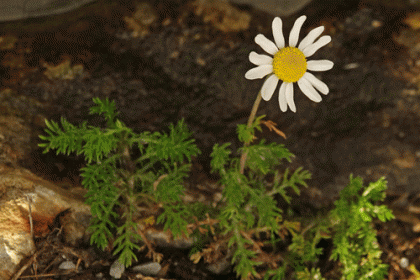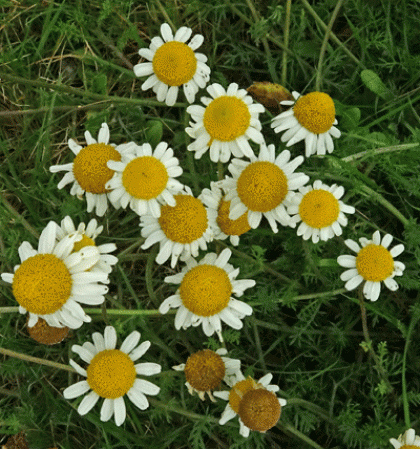A strongly and pleasantly scented plant, Chamomile grows on prostate to erect stems (30cm) that root at nodes. It bears daisy-like flowerheads 18-25mm across, solitarily, on erect stems. White ray florets surround yellow disc florets, the receptacle being conical with scales between the disc florets. Overlapping bracts below the flowerheads are blunt with papery, brown margins. The flowers bloom from June to September. The leaves are grey-green and occasionally they are slightly hairy. They are bi- or tri-pinnate with short hairy segments that are bristle-tipped.
A perennial, native wildflower Chamomile has become very scarce and is now classified as being Near Threatened on the Red Data List of Vascular Plants (2016). It grows on sandy grassland, on grass tracks and on roadsides in West Munster mainly with just a scattering elsewhere.
I saw this species in the 1960’s in County Kerry and re-found it on the Beara Peninsula in 2019 where I photographed it.
If you are satisfied you have correctly identified this plant, please submit your sighting to the National Biodiversity Data Centre




